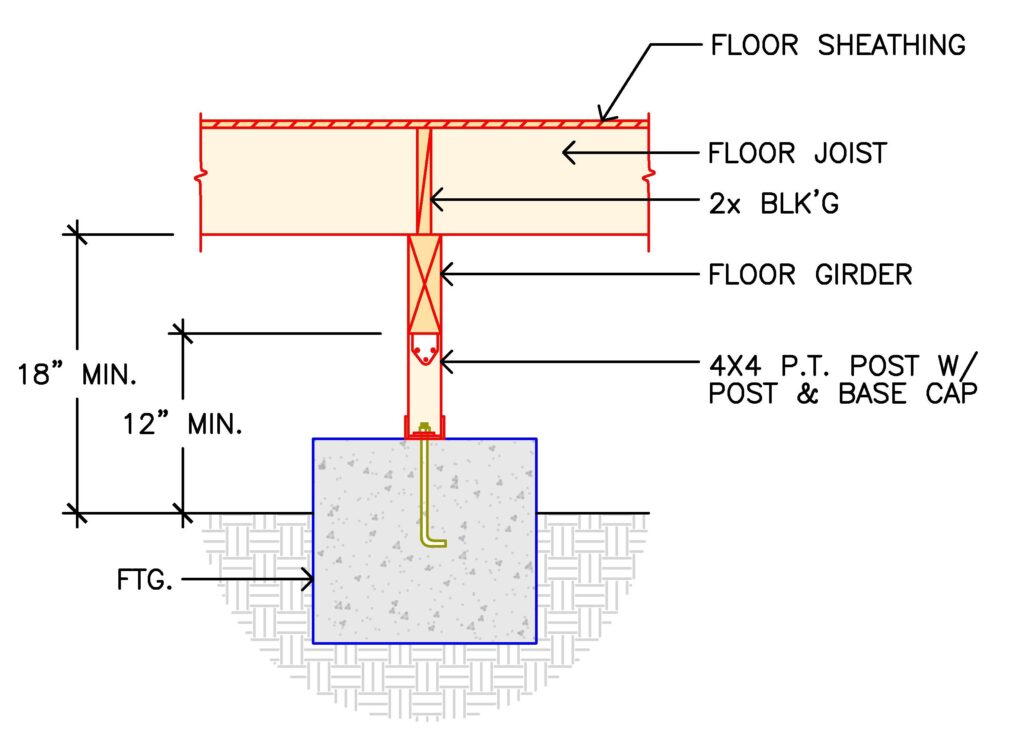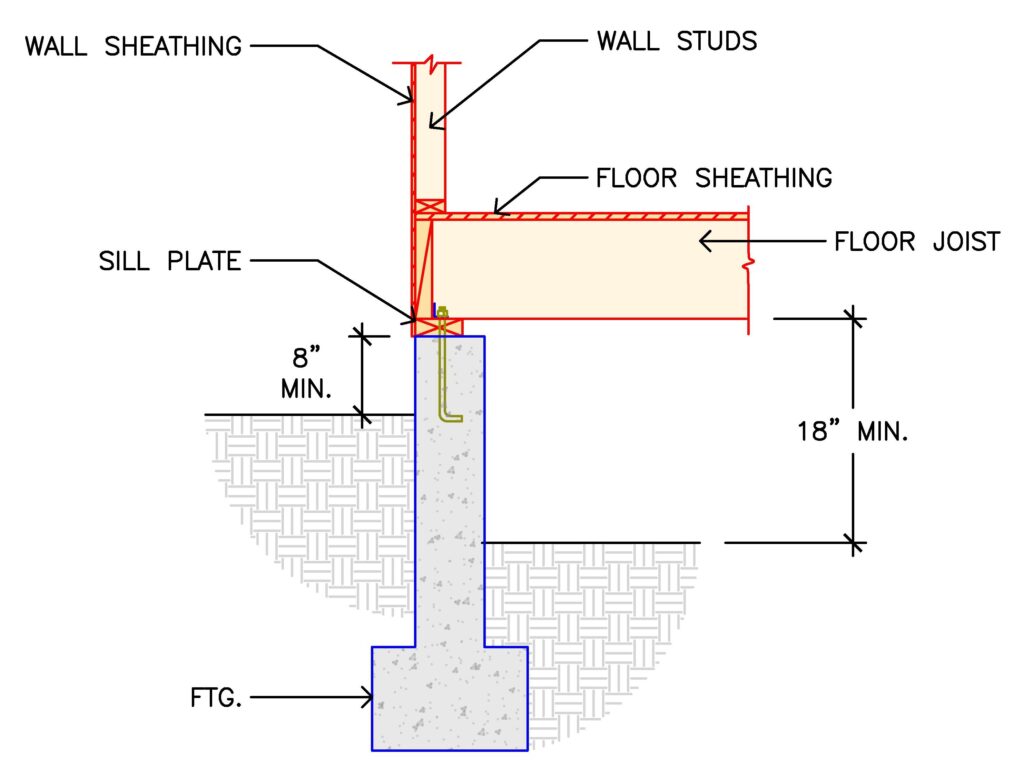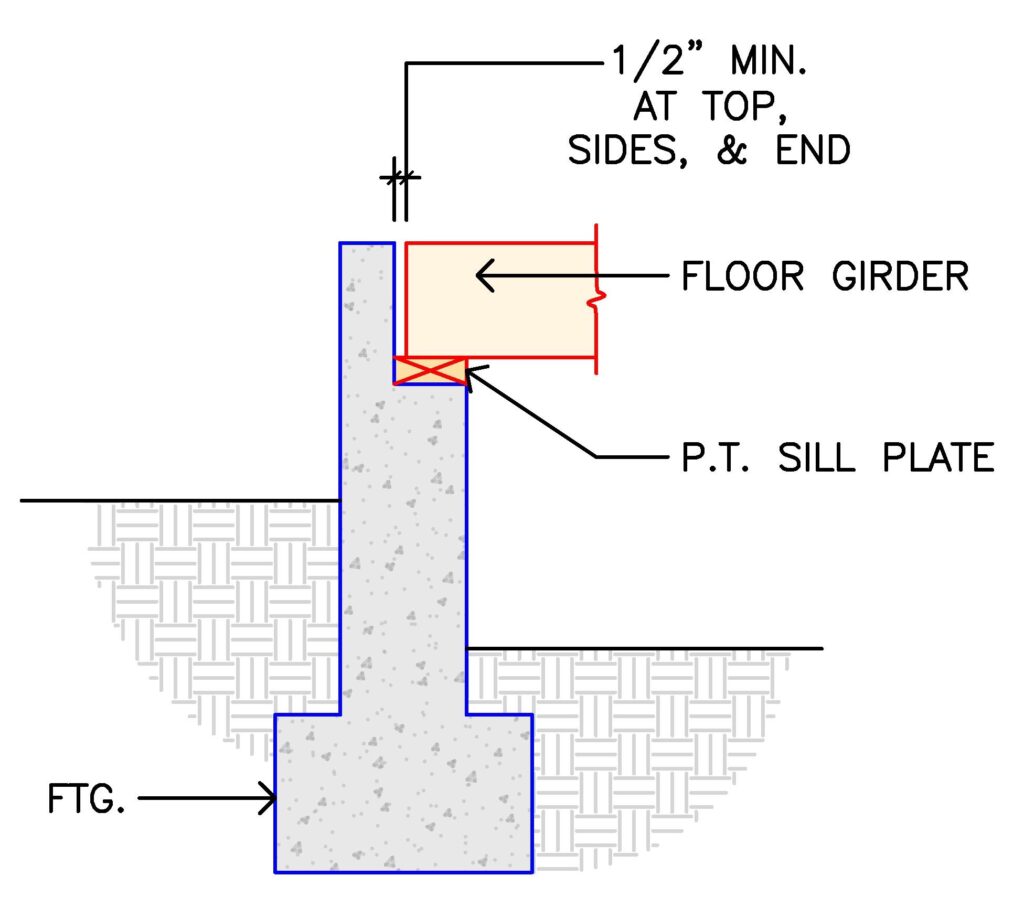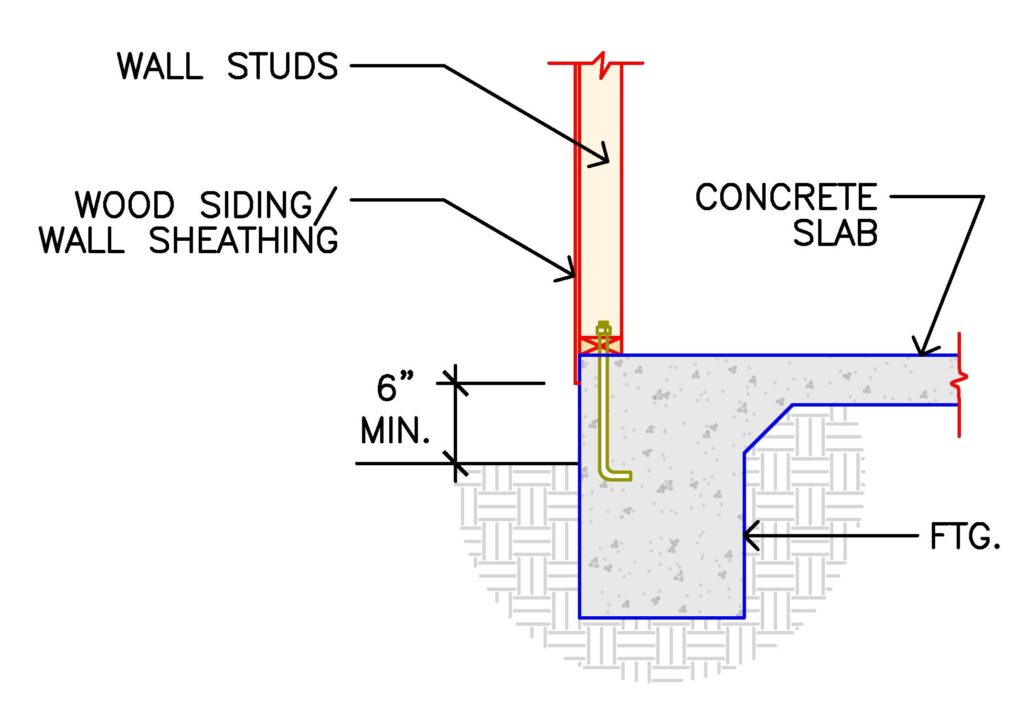As wood-framed structures can be subject to decay, the International Residential Code establishes the need for protection of these wood members based in their location.
The possibility of decay is quite common even in newer buildings. But it can be minimized and even prevented when basic code requirements are followed. Wood-framed structures must be protected by removing the chances of moisture from entering.
Therefore let’s take a look at the 2018 International Residential Code to help us understand the requirements for the protection of wood members.
Preventing Wood Members from Decay
Section R317 of the 2018 International Residential Code specifies the minimum requires for protecting your wood framed structure against decay.
Wood members within a wood structure can be more susceptible to decay damage due to its specific locations. For those areas that are subject to possible decay, the code requires that either the lumber be pressure-preservative treated, be of naturally durable wood, or be of a species of wood that is naturally resistance against decay.
What is Naturally Durable Wood?
Due to its natural ability to resist deterioration, the following lumber types are defined in the code as naturally durable wood that are decay resistant:
- Redwood
- Cedar
- Black Locust
- Black Walnut
When are Wood Members Required to be Protected from Decay?
As mentioned earlier, certain locations within a structure are more susceptible to decay and at these specific locations the code lists 7 scenarios where wood members are required to be protected unless certain clearances are provided.
Let us walk through these 7 scenarios where pressure treated or naturally durable lumber would be required.
1. Floor Joists and Girders located within a Crawl Space
As a crawl space is typically a below-grade area under the house, it can get damp or wet. The space requires proper ventilation for the removal of all moisture-laden air. Therefore to avoid issues with the structural wood members located in the crawl space, a minimum clearance above the grade to the underside of the floor joists and floor girders must be maintained. If these clearances are not met, then the floor joists and floor girders must be protected.
For structural wood floors and wood floor joists, a minimum of 18 inches of space is required above grade. For wood girders, a minimum of 12 inches is required. If you maintain these clearances, the use of preservative-treated wood or naturally decay-resistant durable wood is not necessary.

Again having these clearances below floor joists and girders is acknowledged by the code as the minimum requirement to avoid decay to the wood framing member. When preservative-treated wood or naturally durable wood is not provided, these clearances are necessary to allow for circulation and the removal of moisture within the exterior wall line of the building foundation. Of course this is to assume proper under-floor ventilation is provided in the first place.
Fun Tip: To learn how to calculate under-floor ventilation, be sure to check out this POST.
2. Wood framing members resting directly on foundation walls
Foundation walls, either of concrete or masonry, can absorb moisture from the ground. Both concrete and masonry walls are porous, therefore moisture can find its way to the wood members that rest directly on the foundation.

In this scenario you will need to maintain a minimum clearance of 8 inches from the exposed grade to the wood sill resting on the exterior foundation wall. If this clearance is not met, then the wood members resting on the foundation wall are required to be protected.
3. Sills or sleepers resting directly on a slab
Just like foundation walls, foundation slabs resting directly on earth are susceptible to moisture absorption from the ground surface. Such concrete or masonry slabs at the interior or exterior of the building can cause decay to the wood sills or sleepers placed directly in contact with it.
In this case you have to use decay-resistant or pressure-treated wood to protect the wood members from decay unless you can provide a vapor barrier between the slab and the earth to reduce the possibility of moisture absorption.
4. Wood girders projecting into exterior masonry or concrete walls
Wood girders that project into exterior masonry or concrete walls need a minimum of a ½ inch clearance along the top, sides, and ends of the girder, unless you use pressure-treated or decay-resistant wood.

5. Wood siding, sheathing, and wall framing at the building exterior
The wood siding, sheathing, and wall framing located at the exterior of a building must be located at least 6 inches above the earth unless they are pressure-treated or of decay-resistant wood. It is important not to confuse this section with requirement #2 above which is talking about wood members that rest on foundation walls while this section is in regards to the siding/sheathing at the exterior wall.

When concrete steps, porch slabs, patio slabs, or similar surfaces that are exposed to the weather are located next to these wood members, a clearance of no less than 2 inches above these surfaces shall be provided.
Fun Tip: To learn when a weep screed is required, be sure to check out this POST.
6. Wooden structural members supporting floors or roofs
When exposed to the weather, the wood floor or roof members supporting exterior concrete or masonry floor or roof slabs are required to be protected. The moisture from rain or snow can cause decay in the wood members that support the concrete or masonry slabs.
The use of a vapor barrier however will not require the wood members to be protected when the barrier acts as a separation between the wood members and the slab to avoid direct contact.
7. Wood furring strips attached to basement walls
Furring strips or other wood framing members that attach directly to exterior concrete or masonry walls in the basement area (below grade) are susceptible to decay. The moisture can move in through the walls and into the interior finish materials.
These members must be protected except where you can provide a vapor barrier between the wall and furring strips. This will prevent moisture movement through the walls to avoid rotting of the furring strips and the possible transfer of moisture to the interior wall finishes.
To Learn more about how to protect wood and wood-based products within wood-framed structures from decay, be sure to check out Section R317 of the 2018 International Residential Code (IRC).
.
* Reference Source – 2018 International Residential Code – [Buy on Amazon]
